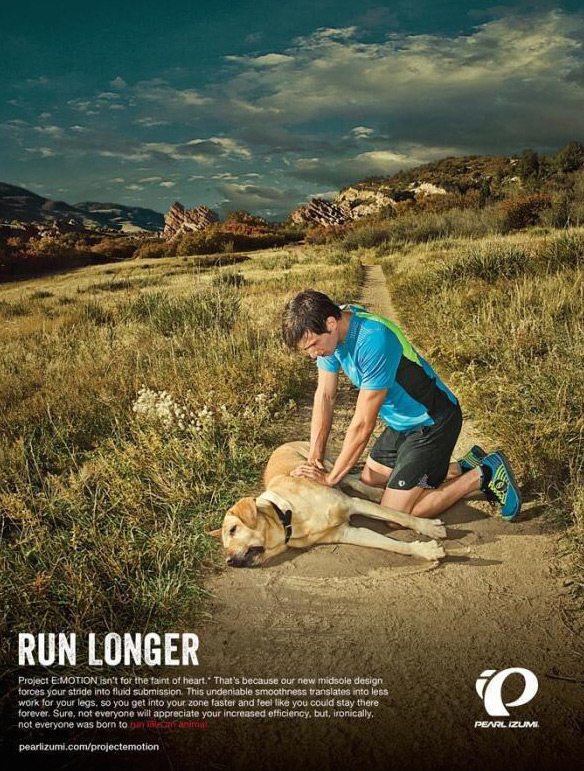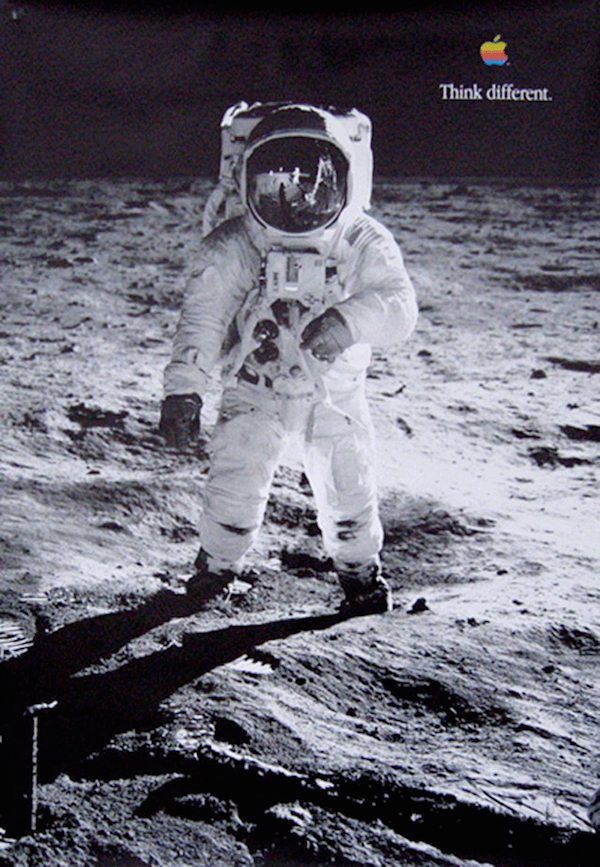Advertising and photography have long been linked with each other. In fact, it’s been nearly a century since advertising first used photography to connect with an audience and form emotional bonds.
As long as the imagery speaks in an authentic manner and impacts some component of our collective humanity, even convenient but effective solutions like advertising stock photos can fulfill the same vital role that vivid imagery has played in advertising for nearly 100 years.
Fortunately for ad teams, the digital age has introduced effective solutions that can leverage the innate power of photo advertising to pierce through and create impactful advertising that is engaging and even inspiring.
When used within a cohesive campaign that blends content and tone, photography’s direct and visceral qualities will continue to be an essential tool to drive conversions and maximize ROI.
This Smirnoff ad is successful in conveying the refreshing qualities of sorbet and transposing them to their new line of reduced calorie vodka. While simple in design, the vivid image allows a consumer to imagine themselves enjoying a cool drink on a warm summer day:

A quick primer on advertisement photos
Equally powerful in print or the digital space, photography captures a unique and specific moment that can be used to tell a story and convey a message through a single, solitary image. While that image can be digitally enhanced to exaggerate particular aspects of the imagery, it is always rooted in an example of relatable, real-life experience that directly connects with an audience.
Whether stark and foreboding or ethereal and dreamlike, photography is used within advertising to leverage the personal experiences and histories of each customer to form bonds that will intensify brand and product identity.
Toyota unsuccessfully tried to employ an ethereal feeling to a photographic print ad for their redesigned Avalon. Instead of creating an inviting atmosphere that would engage the consumer, however, the new Toyota Avalon appears to be prey for the smoke monster in Lost:

Since advertising pictures are ultimately filtered through those individual experiences, they inherently create the advertising personalization that is so important to differentiate a message from the background noise of the crowded marketplace. Ultimately, such strategies increase the likelihood of conversions to sales through the emotional bonds that often serve as a reliable pillar for any successful campaign.
A peek behind photography’s psychological curtain
While advancements in technology have certainly expanded an advertiser’s toolbox and afforded greater efficiencies, most of the primary tenets that serve as advertising’s foundation remain unchanged from the earliest days of the industry.
Although the manner in which ads connect with an audience has evolved from the past, the connections themselves still serve as a proverbial holy grail for ad teams that strive to form lasting bonds between customers and brands.
In modern advertising, basic principles of psychology are more frequently utilized to better understand and thoroughly engage consumers. In this respect, photography is no different than other assets when used within an ad campaign. However, unlike some other media formats, the link between the psychological principles driving consumer behavior and pictures is often well-defined and quantifiable.
Gestalt psychology and consumer perception
Gestalt principles speak of the power of perception and its effects on human behavior. Obviously, this particular modality is extraordinarily useful to advertisers as they attempt to form and maintain targeted perspectives in order to prompt conversions within a customer base.
Now assumed as a given, the link between perception and audience behavior has long been an important underlying concept as advertisers design campaigns to maximize engagement. Photography is especially emblematic of the power of Gestalt principles as it relies on personal experience to convey a story and fill in the gaps left by an image according to an individual’s own specific back story.
Our minds interpret visual, creative data in a nonlinear fashion, initially absorbing the entirety of a particular image and forming a nearly complete perspective from a simple and quick initial glance that concentrates on familiarity.
Athletic shoe manufacturer Pearl Izumi neglected to take the impact of first impressions into account when it created the ad below that forced the viewer to relive those awful memories of losing a beloved pet. Granted, the image does in fact convey the notion of shoes that allow a jogger to run long distances but a consumer needs to stick around long enough to receive that message:

The details of the overarching theme or story within the photographs only emerge later through continued observation of the finer embedded points. Because of this phenomena, first impressions are critical when relying on photography to form bonds with an audience.
This ad from Playland, an amusement park in Vancouver, does anything but give a positive first impression. Rather than evoking a fun and spirited atmosphere that would make the viewer want to visit the park, it instead draws on a common, primal fear of snakes that many would describe as nightmarish rather than playful:

Principles in practice
Although the Gestalt principles range widely in application and context, including concepts from the esoteric to the highly definable, a handful of them are especially germane to photography and its impact on advertising.
Let the mind fill in the blanks
The concepts of closure, continuance, and the law of common fate are useful Gestalt principles when applied to photography in advertising due to their ability to dictate immersion levels for the consumer. That immersive quality that allows an ad to be absorbed and felt by an individual is especially powerful in creating an emotional connection that prompts the audience further along the sales funnel.
In this ad from Chanel, it’s unclear whether the global brand is trying to immerse the consumer into its line of high-end fragrances or a midnight showing of a punk rock revival at the local discount movie theater. While there is nothing wrong with an artistic flare, it needs to serve a purpose and strengthen the emotional connection between brand and customer. Art for art’s sake is best served in a gallery, not in an ad meant to deepen brand identity:

Closure and continuance both entice the viewer to complete the story started by the photograph. This process deepens connections as the ad stops being a simple promotion and becomes a personal metaphor interpreted through individual perspectives.
The law of common fate works in a similar vein. It relies on a grouping of visual cues within an image to form a common ground and, therefore, an underlying theme that now runs through the photograph and intended message. This concept is again useful in creating an immersive atmosphere that envelops the consumer. Such immersion prompts the consumer to envision a world that includes the positive impact of the brand and product in their life.
Concepts of design
The more quantitative and deliberate aspects of the Gestalt principles are equally as important in capturing the gaze of an audience in the intended manner. Concepts like figure-ground, similarity, and proximity can be utilized to manipulate an individual’s attention in a specific way to accomplish a desired outcome.
Although these visual design elements are applicable to most graphical layouts and not specific to photography, they are still immensely important in framing and constructing a picture that conveys a specific message and instills the proper tone and emotion within the consumer.
In another example of poor advertising photography, LAN Airlines, now known as LATAM Air, attempted to create an inviting tone that spoke of friendliness and the beautiful places the airline served. Unfortunately, the tone is more creepy than friendly:

Collectively, these principles explain the psychological impact that a photograph can have on an audience. This allows advertisers to construct images that are specific in intent and deliberately organized to maximize emotional bonds formed between a consumer and brand. They are a significant tool in fostering the advertising personalization that speaks to an individual and creates an immersive sense of familiarity that inherently breeds conversions to sales.
Best practices for utilizing photography in ad campaigns
Advertisers don’t need staff photographers to enjoy the benefits of still images throughout the various stages of their campaigns. Whether the photography advertising ideas are cultivated in-house or from one of many quality stock photo providers, a few simple guidelines will maximize the impact and results of the pictures being used.
Be selective
Selecting advertising pictures, no matter if it’s for print or online format, requires a specific eye for detail that can be often taken for granted. Choosing the right image goes much further than picking photographs that speak directly of the product or service being promoted.
In fact, strict adherence to the subject matter can do more harm than good if it prevents an emotional connection from forming with the audience. The most impactful ads, particularly when using imagery like photography, excel in telling a story and conveying a feeling rather than directly promoting a product or brand.
This ad for a casino leaves no room for the audience’s imagination or individual interpretation. Aside from an amateurish picture serving as the centerpiece, the muddled and crowded composition feels chaotic and overwhelming rather than inviting and appealing:

Adopting a “less is more” approach and letting an individual consumer’s own perspective and experience fill out that story is essential. It allows the framework provided by the photograph to immerse the individual into the intended atmosphere. This is another instance of advertising personalization that relies on the audience’s specific backgrounds to visualize their life using the advertised brand.
Consistency breeds familiarity
The photograph should also blend well with the overall tone and message of the campaign itself. For instance, if a source advertisement is effective enough to prompt the user to click through and extend the customer journey, the subsequent landing page must utilize a matched message to maintain a sense of comfort and familiarity.
Mismatched tone or content between an ad and landing page can significantly impede conversions and ROI by jarring the audience and minimizing the positive effects of the emotional connection created by the ad.
Advertising stock photos can be a convenient and powerful tool
Using advertising stock photos within a campaign is not inauthentic or limiting in its ability to craft engaging and immersive atmospheres in an ad. To the contrary, stock photography can be a dependable and cost-efficient solution to leverage the benefits of photography within an ad campaign.
Between paid services like Getty Images, Adobe Images and Shutterstock, as well as free stock photography providers like Pixabay, StockSnap, Unsplash, and Stock Up, advertisers are not lacking for photography choices that can fit virtually any budget and need.
Given all those choices, a limited budget is no excuse for an ad to have the production quality of a 2 a.m. show on public access. This local ad for an attorney misfires with both the photograph and the overall design, creating an almost comical impression rather than one that exudes professionalism, trust, and expertise:

Stock photography doesn’t have to be generic and bland. Although this piece of stock photography was created as a promotional piece for a film that intentionally mocked common stock photo perceptions, it is unfortunately representative of many advertising stock photos that use little creativity and even less emotional appeal. Stock photography doesn’t have to look like a Sears catalog from 1992 but can engage and inspire if integrated correctly.

When choosing advertising stock photos, the same psychological principles and guidelines should be integrated into the choice of imagery and the manner it’s utilized. Adherence to those principles and consulting the insight provided by Instapage’s stock photography guide will maximize impact and create a sense of advertising personalization for each individual within the audience.
In a now famous set of print ads for its Think Different campaign, Apple employed stock photographs, many of which are now readily available through a number of different stock services, to evoke the spirit of greatness. The ads conveyed inspiration and a connection between Apple products and the ability to be extraordinary. They are simple, powerful, and an example of what stock photography can accomplish when executed well:



A seamless and consistent message can boost your bottom line
Like any campaign, consistency in tone and content naturally lends itself to greater conversions and ROI. By offering your team the ability to scale personalized landing pages, the Instapage optimization platform can help you maximize your ad spend, and of course the impact of photography in your campaigns. Sign up for an Instapage 14-day free trial today.

Try the world's most advanced landing page platform with a risk-free trial.
